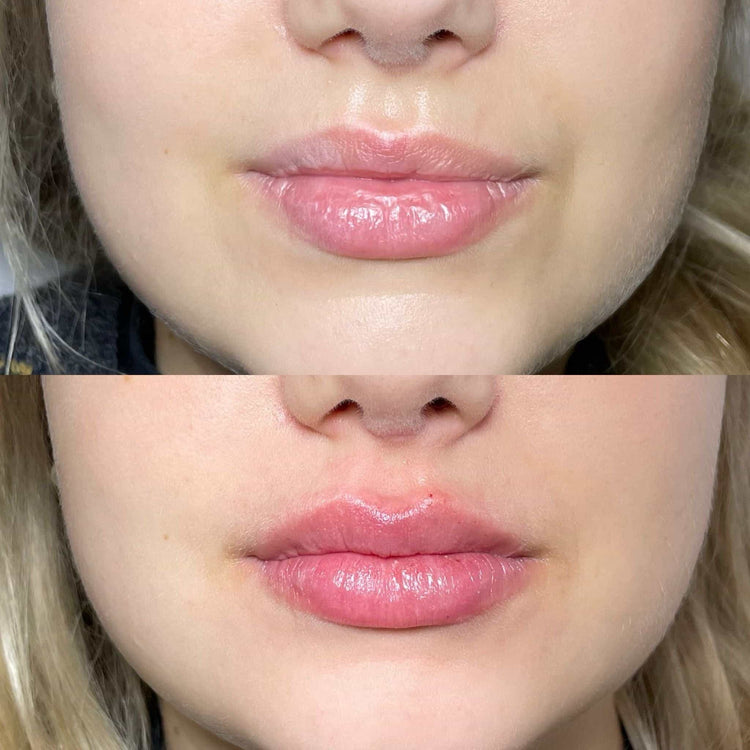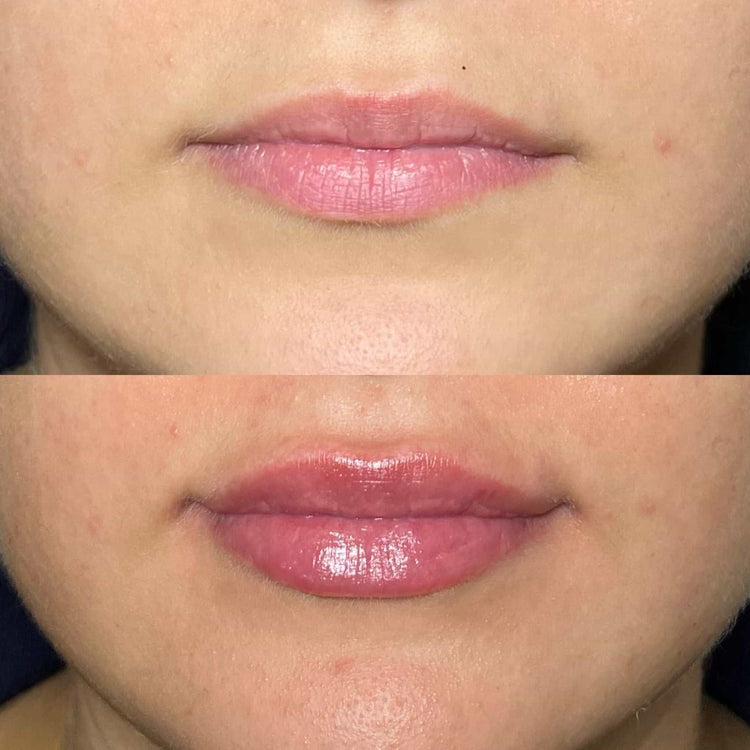Timeline of Swelling and Settling
Understanding the timeline of swelling and settling after lip filler injections can help manage expectations and ensure a smooth recovery. This process typically involves an initial period of pronounced swelling, followed by a gradual reduction in volume as the product settles into its final position.
Immediate to 24 Hours
Immediately following lip filler injections, you’ll likely notice significant swelling. This is a normal reaction to the injection and can make your lips appear considerably larger than intended.
Within the first few hours post-injection, the swelling may peak, making your lips feel firm and potentially uncomfortable. However, by 24 hours, the swelling will begin to subside gradually. You’ll notice a reduction in the overall puffiness and your lip shape will start to become more defined.
1-7 Days
By day 3, the swelling will have significantly reduced, revealing a clearer picture of your final lip appearance. You might still experience some mild puffiness around the injection sites, but it should be less noticeable than in the initial days.
As you approach day 5, any remaining swelling will continue to subside at a slower pace. The lips will feel more natural and comfortable, with the final lip shape becoming increasingly apparent.
Around day 7, most of the initial swelling should have completely subsided. You’ll likely have a very good idea of your final lip result by this point.
1-2 Weeks
Immediately following lip filler injections, you’ll likely notice significant swelling. This is a normal reaction to the injection and can make your lips appear considerably larger than intended.
Within the first few hours post-injection, the swelling may peak, making your lips feel firm and potentially uncomfortable. However, by 24 hours, the swelling will begin to subside gradually. You’ll notice a reduction in the overall puffiness and your lip shape will start to become more defined.
By day 3, the swelling will have significantly reduced, revealing a clearer picture of your final lip appearance. You might still experience some mild puffiness around the injection sites, but it should be less noticeable than in the initial days.
As you approach day 5, any remaining swelling will continue to subside at a slower pace. The lips will feel more natural and comfortable, with the final lip shape becoming increasingly apparent.
Around day 7, most of the initial swelling should have completely subsided. You’ll likely have a very good idea of your final lip result by this point.

Factors Affecting Settlement Time
The time it takes for lip fillers to settle can vary depending on several factors. These factors can include the type and amount of filler used, individual body chemistry, and post-injection care practices. Understanding these influencing factors is essential for managing expectations and ensuring a smooth recovery process.
Type of Filler Used
The time it takes for lip fillers to settle can vary depending on several factors. These factors can include the type and amount of filler used, individual body chemistry, and post-injection care practices.
Different types of fillers have varying compositions and densities, which can affect their settling times. For instance, hyaluronic acid fillers tend to settle faster compared to collagen or fat-based fillers.
The amount of filler injected also plays a role. Larger injections may take longer to settle due to the increased volume being absorbed by the body.
Individual body chemistry, including metabolism and immune response, can influence how quickly a person’s body processes the filler.
Following proper post-injection care instructions is crucial for optimal settling. Avoiding strenuous activity, applying ice packs, and keeping the area clean can minimize swelling and promote smoother settling of the filler.
Injection Technique
The time it takes for lip fillers to settle can vary depending on several factors. These factors can include the type and amount of filler used, individual body chemistry, and post-injection care practices.
Different types of fillers have varying compositions and densities, which can affect their settling times. For instance, hyaluronic acid fillers tend to settle faster compared to collagen or fat-based fillers.
The amount of filler injected also plays a role. Larger injections may take longer to settle due to the increased volume being absorbed by the body.
Individual body chemistry, including metabolism and immune response, can influence how quickly a person’s body processes the filler.

Following proper post-injection care instructions is crucial for optimal settling. Avoiding strenuous activity, applying ice packs, and keeping the area clean can minimize swelling and promote smoother settling of the filler.
Individual Healing Process
The time it takes for lip fillers to settle can vary depending on several factors. These factors can include the type and amount of filler used, individual body chemistry, and post-injection care practices.
Different types of fillers have varying compositions and densities, which can affect their settling times. For instance, hyaluronic acid fillers tend to settle faster compared to collagen or fat-based fillers.
The amount of filler injected also plays a role. Larger injections may take longer to settle due to the increased volume being absorbed by the body.
Individual body chemistry, including metabolism and immune response, can influence how quickly a person’s body processes the filler.
Following proper post-injection care instructions is crucial for optimal settling. Avoiding strenuous activity, applying ice packs, and keeping the area clean can minimize swelling and promote smoother settling of the filler.
Other Factors (e.g., medications, lifestyle)
While genetics and individual metabolism play a role, certain lifestyle factors and medications can influence how long it takes for lip fillers to settle.
Smoking and excessive alcohol consumption can impede blood flow and hinder the body’s natural healing process, potentially prolonging swelling.
Certain medications, such as blood thinners or anti-inflammatory drugs, can also affect the settling process by altering the body’s response to the filler.
It’s crucial to discuss any relevant medications or lifestyle habits with your practitioner before undergoing lip filler injections.
Minimizing Swelling and Bruising
Minimizing swelling and bruising after lip fillers is a common concern for many patients.
Understanding the typical timeline of swelling and applying practical strategies can help optimize recovery.
Applying Cold Compresses
Minimizing swelling and bruising after lip fillers involves taking proactive steps immediately after the procedure. Applying cold compresses to the treated area is crucial in reducing inflammation and minimizing the appearance of bruises.
Cold compresses constrict blood vessels, helping to reduce blood flow to the area and thereby minimize swelling. You can apply ice packs wrapped in a thin towel for 15-20 minutes at a time, several times a day, during the first few days following your injections.
In addition to cold compresses, elevating your head while sleeping can also help reduce swelling by promoting drainage.
Avoiding Exercise and Alcohol
Minimizing swelling and bruising after lip fillers involves taking proactive steps immediately after the procedure. Applying cold compresses to the treated area is crucial in reducing inflammation and minimizing the appearance of bruises.
Cold compresses constrict blood vessels, helping to reduce blood flow to the area and thereby minimize swelling. You can apply ice packs wrapped in a thin towel for 15-20 minutes at a time, several times a day, during the first few days following your injections.
In addition to cold compresses, elevating your head while sleeping can also help reduce swelling by promoting drainage.
Avoiding strenuous activity and excessive exercise for at least a week after lip filler injections is important. Strenuous activity can increase blood flow to the area, potentially exacerbating swelling and bruising.
Similarly, limiting alcohol consumption during the initial healing period is advisable. Alcohol can interfere with blood clotting and may prolong swelling and bruising.
Following Aftercare Instructions Carefully
Minimizing swelling and bruising after lip fillers is a common concern for many patients. Understanding the typical timeline of swelling and applying practical strategies can help optimize recovery.
Minimizing swelling and bruising after lip fillers involves taking proactive steps immediately after the procedure. Applying cold compresses to the treated area is crucial in reducing inflammation and minimizing the appearance of bruises. Cold compresses constrict blood vessels, helping to reduce blood flow to the area and thereby minimize swelling. You can apply ice packs wrapped in a thin towel for 15-20 minutes at a time, several times a day, during the first few days following your injections.
In addition to cold compresses, elevating your head while sleeping can also help reduce swelling by promoting drainage.
Avoiding strenuous activity and excessive exercise for at least a week after lip filler injections is important. Strenuous activity can increase blood flow to the area, potentially exacerbating swelling and bruising. Similarly, limiting alcohol consumption during the initial healing period is advisable. Alcohol can interfere with blood clotting and may prolong swelling and bruising.
Following your practitioner’s post-injection care instructions meticulously is essential for optimal results and minimal side effects.
When to See a Doctor
When to see a doctor after lip filler injections depends on the severity and type of complications experienced.
While some swelling and bruising are normal, seek medical attention if you experience any of the following:
-
Severe or persistent pain
-
Signs of infection such as redness, warmth, pus, or fever
-
Excessive bleeding or bruising that doesn’t improve with home care
-
Numbness or tingling that persists beyond a few days
-
Changes in vision
-
Asymmetry or an unnatural appearance of the lips
It’s important to remember that every individual reacts differently to lip fillers. If you have any concerns or questions about your recovery, don’t hesitate to contact your provider.
Enhance your lips and smile with Dr. Laura Geige at It’s Me & You Clinic
- Nefertiti Neck Lift Treatment Near Limpsfield, Surrey - October 9, 2025
- Nasolabial Fold Fillers – Marionette Lines Near Morden, Surrey - September 22, 2025
- Lip Flip Treatment Near Limpsfield, Surrey - September 14, 2025
